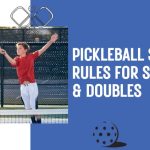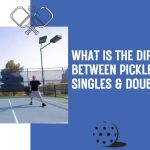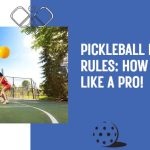Are you single and looking for a fun, competitive sport to play? Can you play pickleball singles? If so, pickleball may be the perfect game for you!
Pickleball can be played as singles or doubles. In singles pickleball, there is only one player on each side of the pickleball court, and the strategy is quite different from that of doubles pickleball.
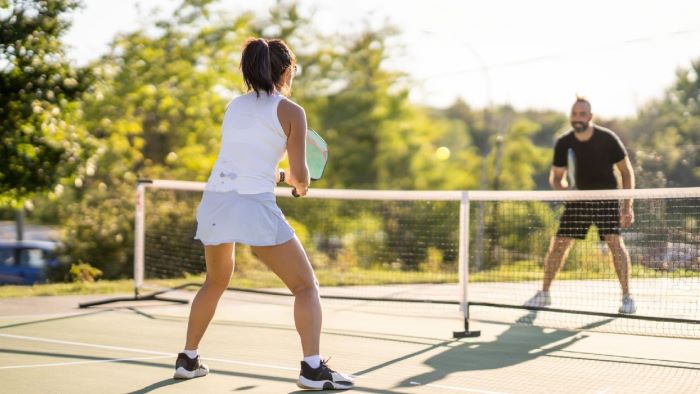
If you are playing alone, these are the basic rules of pickleball singles, that you need to know. The game is easy to learn and is a lot of fun. So get out there and give it a try!
How to Play Singles Pickleball?
A singles pickleball game differs greatly from a doubles’ pickleball game in that the strategy changes significantly. Since you are alone on your side of the pickleball court, every shot is a one-yard race between you and your opponent. Be sure to master the following singles pickleball keys if you decide to play singles pickleball –
- In pickleball, the first serve always starts on the even/right side of the court. When the server wins the point, he or she keeps the serve and switches to the other side of the court to serve next.
- Serving big and deep is essential in singles pickleball. From the very first serve, you should give yourself an advantage over your opponent.
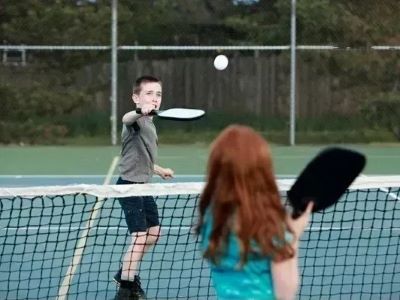
- Getting into the pickleball net and cutting off your opponent’s angles requires a big, deep serve return. After receiving the serve, return it deep into a corner, move into the Kitchen line (also known as the Non-Volley Zone line), and block your opponent’s angles.
- When playing singles pickleball, it is equally important to cut off your opponent’s angles. Your opponent’s angles can be cut off by working your way into the Non-Volley Zone. Follow the pickleball’s trajectory, so you can properly cut off those angles!
- For both doubles pickleball and singles pickleball, it is important to have solid fundamentals and placement. Due to the fact that you play pickleball alone on the court in singles, it is even more important to have solid fundamentals and placement of the pickleball since there is no partner to help you.
- It’s all about finding the open court in singles pickleball. Find the open court and defeat your opponent by taking advantage of angles and passing shots.
- A fault occurs when the ball is hit into the net or out of bounds. If the ball bounces two times before being hit by the receiver, it is a fault on the receiver’s part. While the ball is in play, it is also a fault if a player or any part of their body touches the net. It is the same if the ball hits a player or a player’s clothing. An opponent’s court is at fault if the ball hits a ceiling, wall, or other permanent objects before landing there.
You can also check out our blogs on rules for serving pickleball, and what is drop shot in pickleball to become a pro in your game.
Pickleball Singles Tips to Play Smart
There are a few strategies that should help you win the game faster, but everyone has their own strategies. Tips for picking the right singles strategy in pickleball are –
Utilize Space
While open space on a pickleball court is a great place to hit a shot, it’s more important to consider your opponent’s momentum than how much court he or she leaves open.
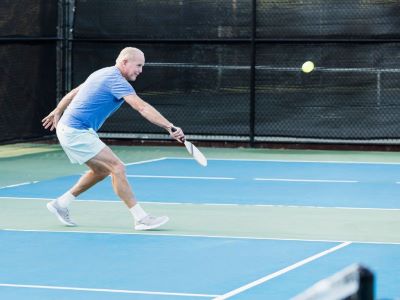
Trying to anticipate your opponent’s actions is important. When they are moving towards the net quickly, hit the ball to the back of their court. To receive the ball, use their momentum to your advantage.
Stay Near The Back
Make sure your returns are deep and to the corners. Stay near the back third of the court. Most players are weaker on their backhand, so force them to use it. If possible, force your opponent into the corners by hitting a deep forcing shot.
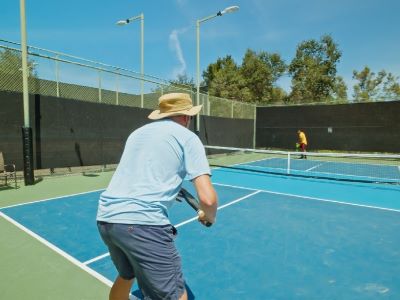
Stay close to the centerline and near the back third of the court. Follow your opponent’s movement, but don’t go too far.
Serve Deep
Despite its importance in doubles pickleball, a big, deep serve is even more essential in singles pickleball. To make your opponent’s return more difficult, you should hit a big, deep serve to push him or her back beyond the baseline.
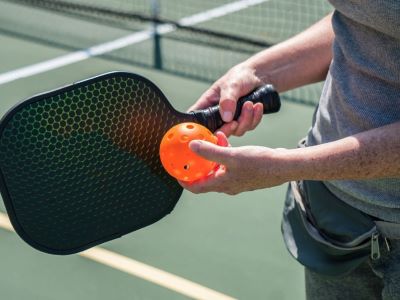
Defending deep into your opponent’s court makes it more difficult for them to move back forward quickly. Just make sure you don’t hit it out of bounds.
Also, read our blogs on how to play pickleball rules doubles for better knowledge.
FAQs
The game of pickleball can either be played as a doubles match or as a singles match. There are no differences between singles and doubles when it comes to the rules.
When playing singles, you must serve diagonally (as you do in doubles). You serve diagonally (from the right half of your side to the opposite half of your opponent’s side) in Doubles. As far as Singles are concerned, this rule doesn’t apply at all. Regardless of where you serve, you are free to do so diagonally or straight while playing singles.
Low Serve – High-level men’s singles players most often serve this way because it prevents a powerful smash from being delivered. At the highest level of play, the low serve may be played forehand or backhand, although the backhand version is more common.
Final Words
The singles game of pickleball involves sprinting one yard for every shot, which can tax your body and test your endurance. Before taking on singles pickleball, make sure you work on your cardio.
Compared to doubles, singles was a nice change of pace. Singles games can benefit from tennis strategies incorporated more easily and effectively.
However, I have to warn you – prepare yourself to run! Even though pickleball courts are one-fourth to one-third the size of tennis courts, there is still a lot of ground to cover.

I am the founder of BallSportsPro, a popular pickleball resource for players of all levels. I am a former professional tennis player, started playing pickleball in 2009 and quickly fell in love with the game. I launched BallSportsPro in 2018 to share my passion for the sport and to provide pickleball players with the latest news, tips, and gear reviews. Today, BallSportsPro is one of the most popular pickleball resources on the web, reaching hundreds of thousands of players each month. In addition to running the website, I also a regular contributor to Pickleball Magazine and a member of the USAPA Pickleball Ambassadors program.

